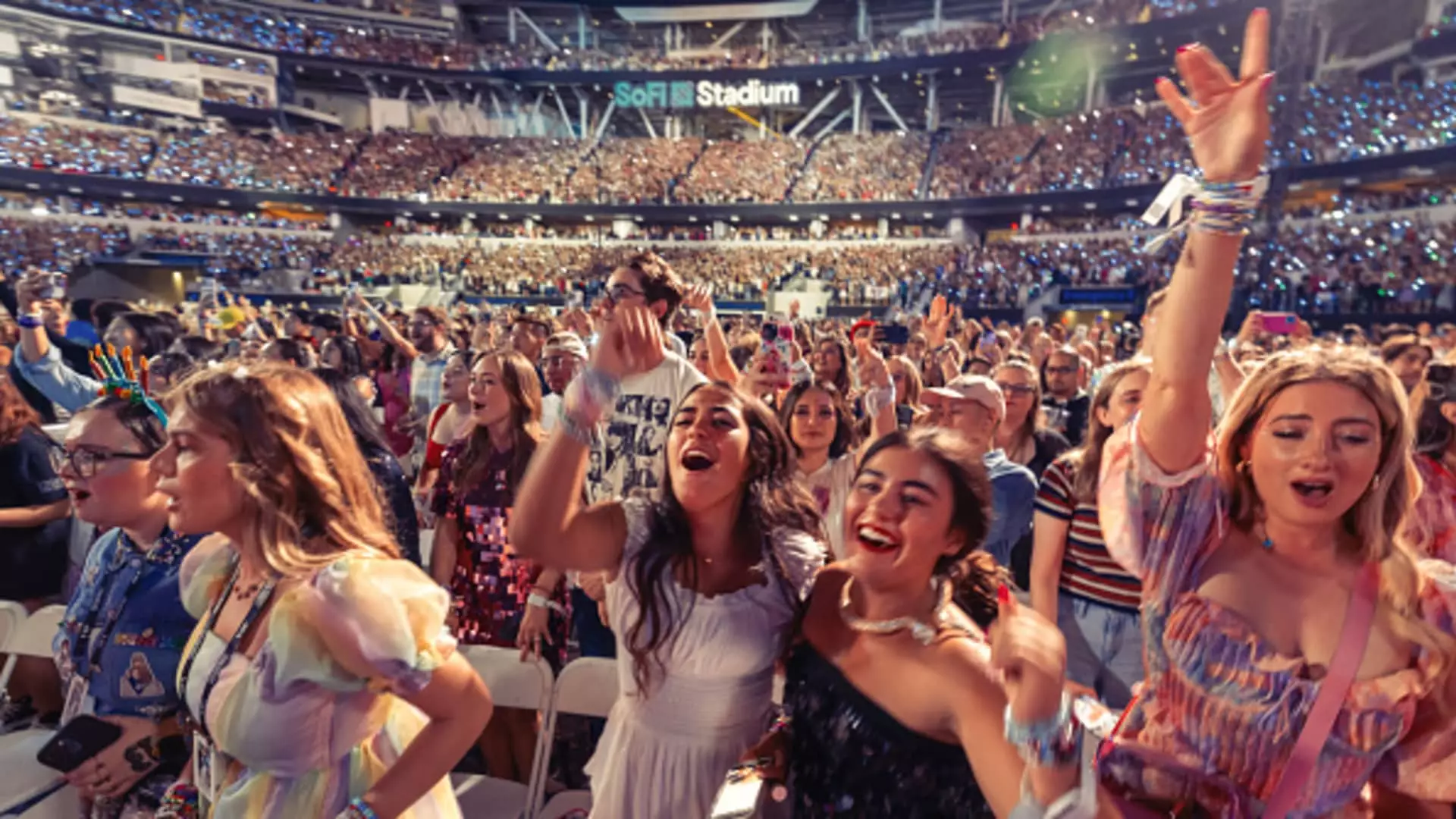The concert scene is on the verge of a remarkable evolution as we approach 2025, with artists like Billie Eilish, Kendrick Lamar, and SZA poised to dominate the stage. The anticipated year is not just significant for the lineup of performances but also for the shifting dynamics of concert attendance and spending behavior among fans. As ticket prices reach new heights, consumers are embracing a complex interplay of enthusiasm and financial commitment, a phenomenon encapsulated by the term “funflation.”
In recent years, concert ticket prices have skyrocketed, evidencing a staggering 20% increase since 2021, as shown by the Bureau of Labor Statistics. This surge in prices coincides with a dramatic rise in attendance; in 2024, fans averaged seven concerts per year—a statistic expected to grow further in 2025. A survey conducted by CouponCabin revealed insightful spending trends: nearly 36% of attendees plan to invest between $100 and $499 on concert tickets, while over 17% are willing to spend up to $1,000. This willingness to spend reflects a cultural shift towards prioritizing experiences, especially in younger demographics.
What drives this trend? The post-pandemic landscape has invigorated demand for live events, prompting consumers to transcend traditional spending boundaries. Notably, “passion tourism,” where fans travel across cities and even countries to attend concerts, has redefined the relationship between music and consumerism. Millennials and Generation Z have reportedly been willing to incur debt for memorable experiences. A study by Bread Financial highlighted that a significant percentage of these young adults have spent as much as $5,000 just on tickets for destination events—an extraordinary commitment that underscores the value placed on these moments.
The concept of dynamic pricing has emerged as a pivotal factor driving ticket prices higher. Traditionally associated with industries like airlines and ride-sharing, this pricing model reflects a greater price point during high demand periods. Joe Bennett, a forensic musicologist at Berklee College of Music, notes that while consumers have adapted their expectations to fluctuating costs in these sectors, concert audiences are grappling with the sudden shift in pricing standards for live events.
Dynamic pricing has introduced a contentious atmosphere among concert-goers, especially after high-profile incidents where fans have reported being charged exorbitant prices for tickets. The U.K. investigation of Ticketmaster regarding its handling of Oasis reunion concert tickets exemplifies this contentious issue; many fans found themselves paying double the expected ticket price, leading to a public outcry. Conversely, artists like Taylor Swift have taken a stand against this model, choosing to maintain fixed pricing to preserve accessibility for their fans—illustrating the growing divide between the consumer experience and the industry’s profit-driven strategies.
Historically, recorded music served as the primary revenue source for artists, but this trend has shifted dramatically over the past two decades. According to economist Alan Krueger, by the mid-2000s, the live music sector had become more lucrative than record sales or publishing royalties. The live events industry saw a 25% revenue increase in 2023 alone, indicating a robust growth trajectory driven by explosive post-pandemic demand and larger-than-life stadium tours.
The evolution towards dynamic pricing, initially pioneered by Ticketmaster back in 2011, has cemented itself as a standard practice in the ticketing realm. This adaptation reflects the industry’s attempt to capitalize on demand, where profits can be maximized at peak times. Yet, as Matt Schulz from LendingTree points out, this strategy is not universally embraced by consumers. The discomfort surrounding dynamic pricing has been palpable, signifying a broader resistance to manipulating ticket sales based on demand.
The aftermath of the pandemic has fostered a renewed attitude towards spending on experiences, summarized by the sentiment of “YOLO”—you only live once. According to Greg McBride from Bankrate.com, this perspective has pushed consumers to prioritize unforgettable experiences, drawing lines concerning what they will forgo in their lives. Despite tightening household budgets, many individuals are unwilling to sacrifice attendance at live music events, indicating the integral role of music in their lives beyond mere entertainment.
The live music industry is evolving rapidly, navigating the challenges posed by rising ticket prices while adapting to the expectations of modern audiences. As we look toward 2025, concert-goers must reconcile their love for live performances with the realities of a transformed economic landscape. The future of live music will undoubtedly hinge on how artists, promoters, and ticketing platforms manage this intricate balance between profit and accessibility, ensuring that the magic of experiencing music live remains within reach for fans everywhere.

